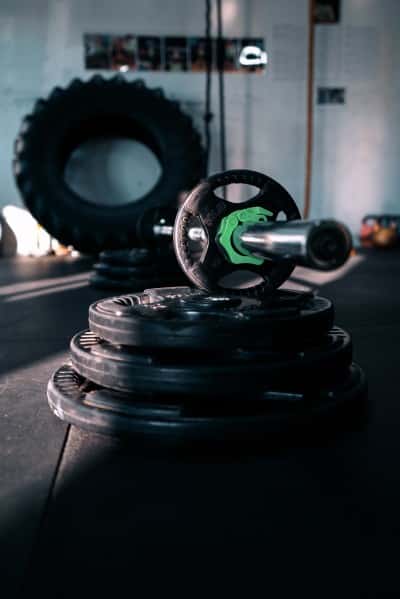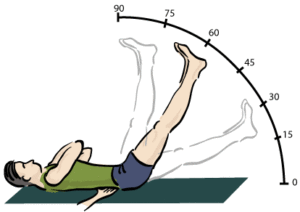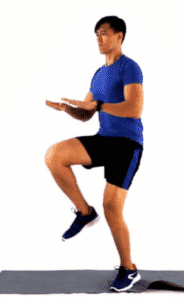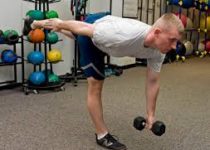The Best Psoas Strengthening Exercises
The iliopsoas is one of the most important muscles in your body. It connects the lumbar vertebrae and your lesser pelvis.
Therefore it is the only muscle in your body, that connects your upper & lower body. You might already be able to imagine how many functions such a muscle would have.
Due to more and more people having desk jobs, we wanted to explain to you how to strengthen your tight psoas muscles!
Why you should train your psoas
When going into the gym most people would think of training their quads to lower back arms & chest. But most people miss out on the hip flexors!
But the psoas muscle is one of the most vital muscles in your body when it comes to hip flexion. Therefore the psoas strengthening is an excellent approach to increase the quality of your everyday life!
Any bending motion is going to be led by your psoas. The problem is, that sitting causes your psoas to get weak as it becomes disengaged.
Often people mix up weakness with tightness. Therefore we recommend you to both strengthen & stretch your psoas!
But the psoas influences more body parts than you might imagine.
It is proven, that knee & lower back pain are frequently caused by psoas weakness. By strengthening your hip flexors you are going to be able to prevent knee pain.

Top 10 Exercises:
Here you will find the best ways to strengthen the psoas muscles. Try to integrate at least 2-3 of those exercises in your workout if you want to see significant improvements.
Many of the exercises on the list can be done without having access to a gym. But it is going to be helpful if you have access to an elastic band.
Static Exercises
It is important to strengthen your psoas with different types of exercises. Both static & dynamic movements are important as the psoas plays an important role in multiple types of movement.
Static exercises are going to be the best to improve your stability & posture.
Isometric Holds
The first type of exercise that you should consider doing is isometric holds. There are different shapes, which are going to engage your psoas & hip flexors.
We recommend staying in each of the positions for at least 30 seconds before going to the next exercise.
One Leg Hold:
With this exercise, you are going to lift one leg off the ground while the other leg remains on the floor. You can use your hands to support your upper body from falling backward, but to engage your core muscles more you might want to do the exercise without using your arms. Remember to switch legs!

Tucked Hold:
Here you are going to be in the same sitting position, but your arms are not going to touch the ground. Your knees should be bent around 90 degrees, while both legs are fully off the ground!
V-Hold
Another excellent exercise is the V-hold; both legs are going to be straight and lifted off the ground. Your legs are going to be at a 45-60 degree angle in relation to the floor. Your upper & lower back should still not touch the ground.
Plank With One Leg
The next exercise on the list is simply a plank, but with one of your legs being up in the air. The important aspect is to push your heel up as much as you can, to engage your psoas.
Hold the exercise for about 10-30seconds before switching sides, while keeping your core engaged the entire time!
Dynamic Exercises
Besides static exercises, it is equally important to strengthen your psoas with dynamic exercises. Especially when using full range of motion you are going to benefit from more flexibility & joint mobility.
Therefore dynamic exercise is going to be the most beneficial if you want to strengthen & stretch your psoas at the same time!
Lying Leg Raises
With this exercise, you want to be lying on the floor, preferably with a yoga mat. The next step would be to raise one leg as far up as you can. You should do at least 12 repetitions on each side, before taking a small break.
Additionally, you can do the same exercise but with both legs. To improve the efficiency of the exercise there are some aspects to keep in mind:

With this exercise, you want to be lying on the floor, preferably with a yoga mat. The next step would be to raise one leg as far up as you can. You should do at least 12 repetitions on each side, before taking a small break.
Additionally, you can do the same exercise but with both legs. To improve the efficiency of the exercise there are some aspects to keep in mind:
Knee Raises (+ Resistance Band)
One of the best exercises is the knee raise. Here you are gonna be standing up on one foot. Then you are going to raise your knee towards your stomach.
How to make it harder:
For most people, exercise is going to be too easy for optimal results. Therefore we recommend wrapping an elastic band around the foot that is on the ground. By putting the other foot around the other end of the elastic band you are going to make the exercise more engaging.
Bonus Variation:
Another interesting alternative would be doing the same exercise but lying on the floor. Once again you can attach an elastic band to a stable object in front of you.

Hanging Leg Raises
Our last exercise on the list is the hanging leg raise. Here you are gonna be hanging on a bar. Alternatively, you also have the option to use parallel bars, while doing the same exercise.
Depending on your strength level you are either going to bent your knees or have your legs straight. The aim is to lift your legs without swinging or using your scapula towards your core.
Watch the video below for more psoas exercises
How to adjust exercises
Regarding how versatile the psoas functions are, we recommend you to modify & adjust exercises.
Especially changing the angle of an exercise can work on another part of the psoas, which you might have neglected previously.
The easiest & most sufficient adjustments are:
- Removing one leg of the exercise
- Changing the angle (lying/standing/hanging)
- Adding Resistance (using weights/elastic band)
By using these basic principles you can make training more interesting and suitable for your personal needs!
How Much Should You Train?
For optimal results, we recommend training your psoas at least 2 times per week. You are going to get the best by training 3-4 times per week though.
With your workouts, you want to do at least 2-3 sets with 10-15 repetitions per exercise. Also, try to integrate 2-4 exercises to stay balanced. It is important to do different exercises, as the muscle is very complex to target & has multiple functions.
Another tip is to listen to your body as much as you can! If you feel extremely sore or almost in pain the next day, you should be doing fewer repetitions & sets the next time you train.
It is also important to wait until the soreness disappears, as training sore is not going to increase your strength but rather leads to injury!
Stretching vs Strengthening
The psoas is a muscle that is covered by multiple muscles. Therefore it can be hard to target. Even in science, it is one of the least explored muscles, although it is the most vital muscle in your body!
Since most people do not have a lot of knowledge about the psoas, there is a common misconception between tightness & weakness. This might actually be dangerous, as stretching can harm you if your psoas is actually just weak.
But also the other way round, a tight psoas is not going to get loose by doing strength training. Especially when not doing strength exercises with a full range of motion you are going to stiffen up the muscles around your thigh bone!
Sharing Is Caring!
If you enjoyed this article feel free to share it with your friends & family. In case there are any questions left you can always leave a comment below!


